Centennial, CO Pollen and Allergy Report for Summer 2023
Pollen Allergy Trends in Centennial, CO
When is pollen lowest in Centennial, CO?

February
Lowest month total PPM
Avg. PPM
When is pollen highest in Centennial, CO?

March
Highest month total PPM
Avg. PPM
How does pollen in Centennial, CO compare to Colorado?
Centennial has a lower average PPM than the state of Colorado.
Centennial yearly avg PPM:
Colorado yearly avg PPM:
How does pollen in Centennial, CO compare to the USA?
Centennial has a lower average PPM than the USA.
Centennial yearly avg PPM:
USA yearly avg PPM:
Is pollen worse this year in Centennial, CO?
Spring 2023 was worse than spring 2022.
Spring 2023 PPM:
Spring 2022 PPM:
Average PPM in Centennial, CO
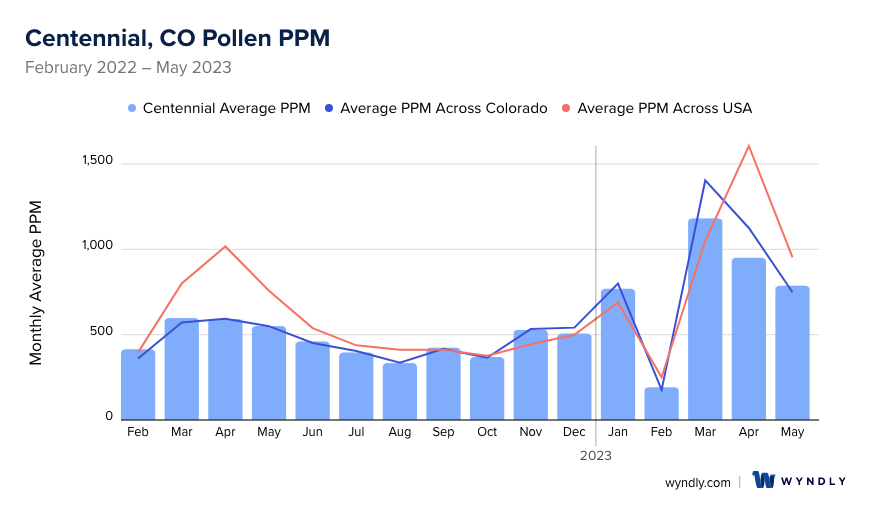
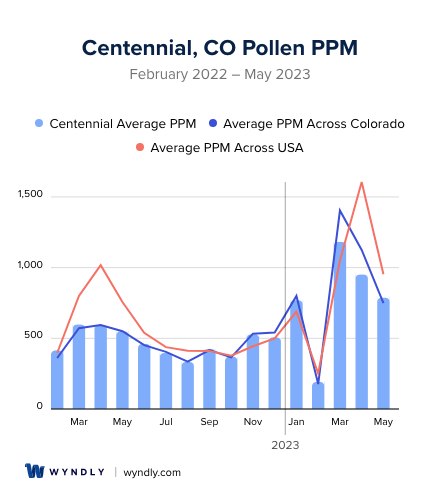
Centennial, CO Pollen and Allergy Breakdown by Month
Grass
When is grass pollen highest in Centennial, CO?
May has the highest grass pollen in Centennial, CO with an average PPM of
When is grass pollen lowest in Centennial, CO?
November has the lowest grass pollen in Centennial, CO with an average PPM of
Tree
When is tree pollen highest in Centennial, CO?
March has the highest tree pollen in Centennial, CO with an average PPM of
When is tree pollen lowest in Centennial, CO?
September has the lowest tree pollen in Centennial, CO with an average PPM of
Weed
When is weed pollen highest in Centennial, CO?
November has the highest weed pollen in Centennial, CO with an average PPM of
When is weed pollen lowest in Centennial, CO?
February has the lowest weed pollen in Centennial, CO with an average PPM of
Centennial, CO Pollen Monthly Breakdown by Pollen Type




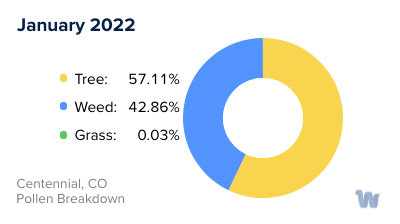

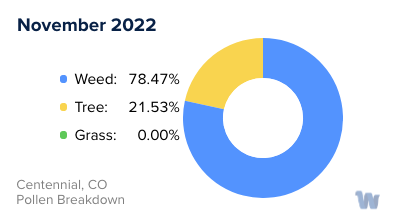
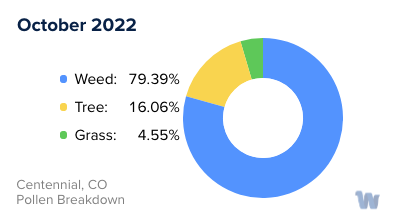

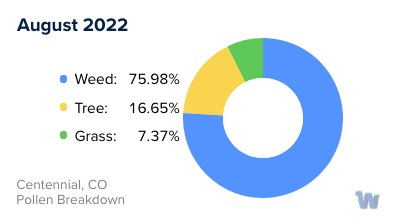

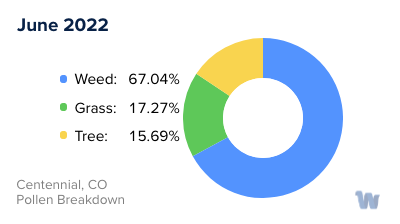



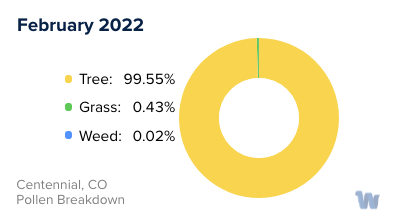
Pollen and Hay Fever in Centennial, CO
Living in Centennial, Colorado, one is graced with the beauty of changing seasons, but with these transitions, the types and prevalence of pollen also shift, bringing about allergy symptoms for many residents.
As spring begins, the most common allergen is tree pollen. A variety of trees start releasing pollen as early as late December or early January, with the bulk of the season kicking off in February. This early start means some individuals may begin to experience spring allergy symptoms - itchy eyes, runny nose, and nasal congestion - before they even realize that spring is on the horizon. The tree pollen season usually comes to a close in April or May.
When summer arrives, the main allergen shifts from tree pollen to grass pollen. The grass pollen season typically begins in May and can extend through August or sometimes even into early September.
As summer fades into autumn, weeds such as ragweed, tumbleweed, and sage become the primary contributors to the pollen count. This period starts in late summer and continues until the first frost, which can occur as late as mid-December in some years.
Winter might seem like a reprieve from pollen allergies, with the frequent snowfalls and cold temperatures. However, this season brings its unique challenges. The cold weather prompts us to keep our doors and windows closed and pets inside. For those with pet allergies, this can lead to an increase in symptoms. Moreover, heating our homes can lead to drier air, which can irritate sinuses and airways and potentially lead to eczema flares.
In Centennial, the changing seasons come with a variety of allergens. Understanding when different types of pollen are prevalent can help residents prepare for and navigate each season.


